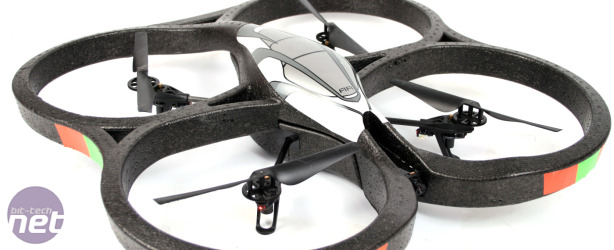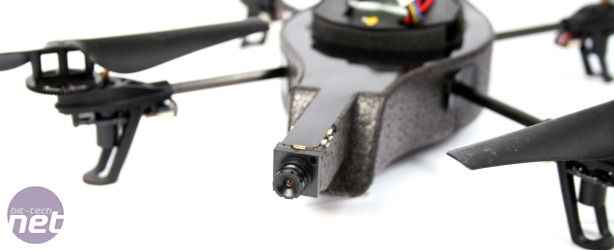
Designing RC Helicopters
After Paul reviewed the Parrot AR.Drone a few weeks ago, we decided we wanted to know more about how the iPhone-piloted quadricopter was made. So, we sat down with Parrot’s Michaël Pastor, to get a better idea of how the AR.Drone works and what the future might hold for RC devices.Bit-tech: Hi! Let’s start simple – can you explain to us what sets the Parrot AR.Drone apart from other remote control helicopters.
Michaël Pastor: The Parrot AR.Drone is the first quadricopter to use Augmented Reality and be piloted with Wi-Fi. We want to offer a dream experience with a revolutionary quadricopter that uses Augmented Reality and is very easy to control with an iPhone/iPod touch. As an example, the AR.Drone is the first mass market product using a camera to calculate its own speed. This camera is mainly used for stabilization purposes.
To our knowledge, we are the only ones presenting such a quadricopter and by using it, gamers and iPhone/iPod touch addicts will encounter an unprecedented experience.
BT: Was it challenging designing the AR.Drone, bearing in mind that you had to keep the cost low and fit the controller to the iPhone interface?
MP: The challenge in developing the AR.Drone was to create a very high-tech, stable and easy to control flying object while keeping the cost low. It took the Parrot engineers five years to create the AR.Drone!
BT: Can you tell us why you chose to go with a Quadricopter design, rather than a conventional helicopter?
MP: A quadricopter offers the best stability. With all the technology we’ve used in our AR.Drone, it offers an better - if not the best - stability and manoeuvrability a quadricopter can get.
BT: Speaking of which, was there a particular reason you chose to make the Drone a flying vehicle, rather than a remote control car or boat?
MP: It was our dream to create a new high-tech product for both kids and adults that could introduce a new concept in gaming. Our very first entertainment product was actually a Bluetooth racing car, but Parrot founder Henri Seydoux wasn’t fully satisfied. The car didn’t live up to his dream. He thought the device should fly, so we came up with the idea of a quadricopter. But it was also necessary to have a very powerful computer for the quadricopter to be stable and easy to control.
BT: The AR.Drone has some Augmented Reality iPhone games that it’s designed to be used with. Can you tell us a little about how these work and what your plans are for expanding that range?
MP: The Parrot AR.Drone is equipped with 2 video cameras. One broadcasts to the screen of the iPhone, with the other camera giving an aerial view. When tags appear in front of the cameras you will, depending on the application, see virtual objects - targets, monsters, robots, for instance - appearing on the screen of the iPod touch/iPhone.
Parrot is expert in wireless technology, however signal processing and video gaming requires a specific know-how we don’t have in-house today. So we went to specialised companies capable of developing games that could make full advantage of the AR.Drone to offer end-users an astonishing experience.
We’ve launched two applications so far, the first of which is called AR.Freeflight and which is required to fly the AR.Drone. The second application, AR.FlyingAce, is a multiplayer game that lets you have dogfights with your friends.
Furthermore, the Parrot AR.Drone was presented as a project at CES Las Vegas in January 2010. At that time, an SDK was available for developers and this is still the case today. We are looking for talented developers who believe in the AR.Drone and its potential, especially with Augmented Reality gaming.
To date, about 450 developers have registered on our platform. Some are working on games using Augmented Reality and others on making the AR.Drone compatible with other devices than the iPhone.
BT: We’re seeing an increasing number of remote control devices with integrated cameras and augmented reality games seem like a logical next step from that hardware. Do you think we’ll see an increased demand for these devices in the future?
MP: At Parrot, we really believe in the future of Augmented Reality. The possibilities of this technology are endless. The video gaming industry has developed more powerful consoles, with games that have also developed too. Although graphics and manoeuvrability have been improved, the concept of the games has been the same since the very beginning of video games.
And that’s all we had time for! Flip the page for a look at some of our favourite RC vehicles.

MSI MPG Velox 100R Chassis Review
October 14 2021 | 15:04










Want to comment? Please log in.